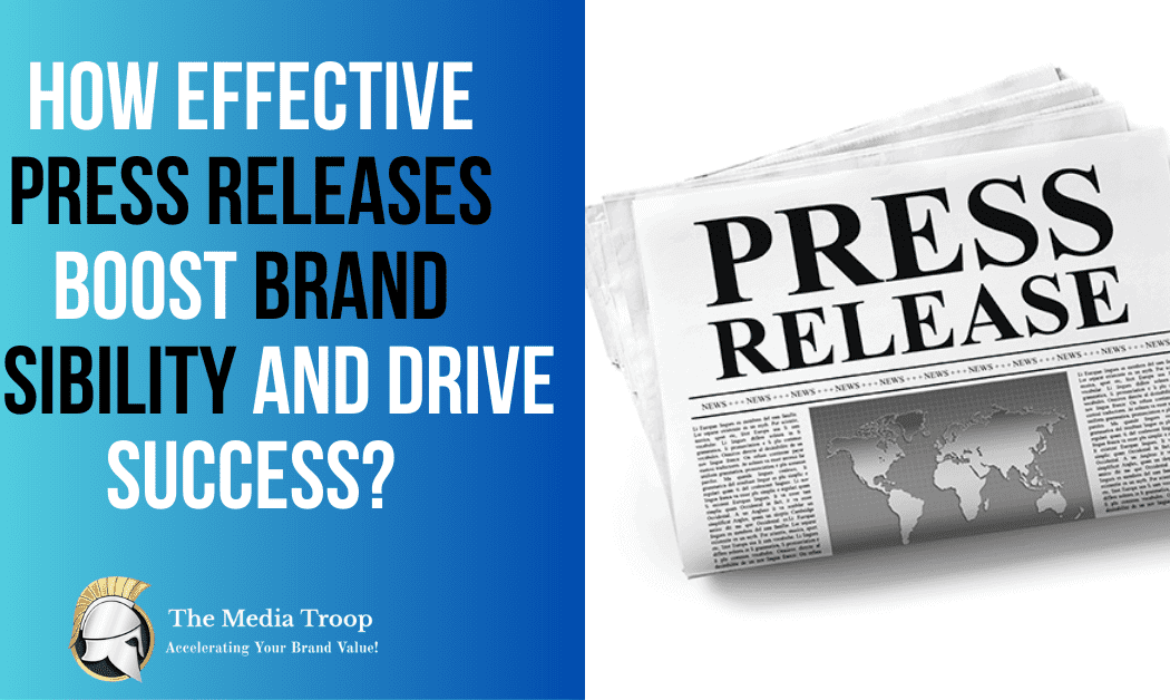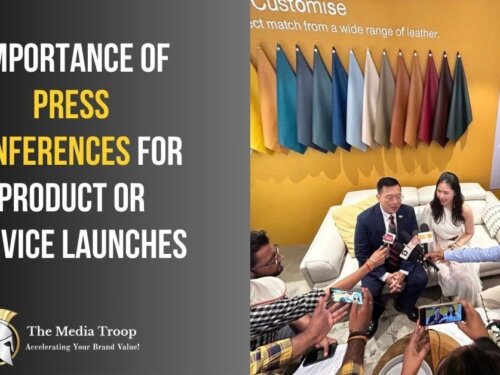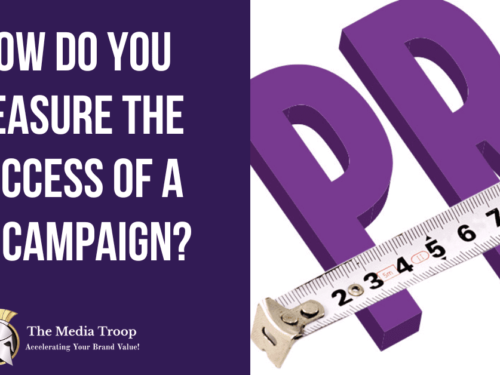Press releases have long been an essential tool in public relations and marketing strategies. When used effectively, press releases can generate media coverage, enhance brand visibility, and attract attention from potential customers. In this article, we will explore the effectiveness of press releases and how they can benefit businesses.
1. Introduction
In today’s fast-paced digital world, businesses are constantly seeking effective ways to communicate their message to a wide audience. Press releases have proven to be a valuable tool for companies of all sizes, enabling them to share important news, announcements, and updates with journalists, industry influencers, and the general public.
A press release, also known as a news release or media release, is a written communication that announces something newsworthy about a company, organization, or individual. It serves as a direct channel of communication between the issuer and the media, providing journalists with the necessary information to craft a story or news article.
3. The Purpose of Press Releases
The primary purpose of a press release is to generate media coverage and raise awareness about a specific event, product launch, milestone, or any other newsworthy development within an organization. Press releases are designed to attract the attention of journalists, bloggers, and industry influencers who can amplify the message to a larger audience.
4. Benefits of Press Releases
Press releases offer several benefits for businesses:
4.1 Brand Visibility: Press releases help increase brand visibility by reaching a wider audience through media coverage. When a press release gets published by reputable news outlets or shared on influential websites, it can significantly enhance a company’s visibility and credibility.
4.2 SEO Benefits: Press releases can contribute to search engine optimization (SEO) efforts by generating backlinks from reputable websites. These backlinks improve a company’s search engine rankings, making it more discoverable to potential customers.
4.3 Thought Leadership: Well-crafted press releases that provide valuable insights and expert opinions can position a company as a thought leader in its industry. This enhances brand reputation and encourages trust among consumers.
4.4 Crisis Management: Press releases are an effective way to manage and control the narrative during a crisis or challenging situation. By promptly addressing the issue, companies can mitigate potential damage and maintain transparency.
5. How to Write an Effective Press Release
Writing an effective press release requires careful planning and attention to detail. Here are the key elements to consider:
5.1 Compelling Headline: The headline should grab attention and clearly convey the main message of the press release.
5.2 Engaging Introduction: The opening paragraph should provide a concise summary of the news and entice readers to continue reading.
5.3 Newsworthy Content: Press releases should focus on sharing information that is genuinely newsworthy, such as product launches, significant partnerships, awards, or industry innovations.
5.4 Concise and Clear Language: Keep the press release concise, using clear and simple language to ensure easy comprehension.
5.5 Quotes and Multimedia: Including quotes from key stakeholders adds credibility and humanizes the press release. Additionally, incorporating multimedia elements such as images or videos can make the content more engaging and shareable.
5.6 Contact Information: Provide clear contact information at the end of the press release for media inquiries or further information.
6. Distribution Channels for Press Releases
Once the press release is written, it needs to be distributed effectively to reach the target audience. Here are some common distribution channels:
6.1 Newswire Services: Utilize newswire services that distribute press releases to a wide network of journalists, media outlets, and online platforms.
6.2 Media Outreach: Personally reach out to journalists, bloggers, and influencers who cover topics relevant to the press release. Build relationships and offer exclusives to increase the chances of coverage.
6.3 Company Website and Social Media: Publish the press release on the company’s official website and share it across relevant social media channels to reach a broader audience.
6.4 Email Marketing: Leverage the company’s email list to send the press release directly to subscribers, customers, and industry contacts.
7. Measuring the Effectiveness of Press Releases
To determine the impact of press releases, it’s important to track and measure their effectiveness. Here are some metrics to consider:
7.1 Media Coverage: Measure the number of media outlets that pick up the press release and the quality of coverage received.
7.2 Website Traffic: Analyze the increase in website traffic following the distribution of the press release.
7.3 Social Media Engagement: Monitor the engagement metrics on social media platforms, such as likes, shares, comments, and mentions related to the press release.
7.4 Backlinks and SEO: Track the number and quality of backlinks generated from the press release, as well as the impact on SEO rankings.
8. Tips for Maximizing the Effectiveness of Press Releases
To maximize the effectiveness of press releases, consider the following tips:
8.1 Targeted Distribution: Tailor the distribution of press releases to specific journalists, bloggers, or industry influencers who are likely to be interested in the news.
8.2 Timing: Choose the timing of the press release strategically to ensure maximum visibility and avoid competing with other major news events.
8.3 Multimedia and Visuals: Include compelling visuals, such as images, infographics, or videos, to make the press release more appealing and shareable.
8.4 Personalization: Customize the press release by addressing the recipient directly, demonstrating that it is not a generic mass email.
8.5 Follow-Up: Follow up with journalists or media outlets after sending the press release to build relationships and answer any questions they may have.
9. Examples of Successful Press Releases
Several companies have achieved success through well-executed press releases. For instance:
9.1 Company XYZ Launches Innovative Product: This press release generated significant media coverage and created buzz around the launch of a groundbreaking product.
9.2 Organization ABC Receives Industry Recognition: By sharing news about an industry award, this press release positioned the company as a leader in its field and garnered attention from industry publications.
10. Press Release Best Practices
To create impactful press releases, follow these best practices:
10.1 Keep It Concise: Stick to the key information and avoid excessive jargon or technical details.
10.2 Proofread and Edit: Ensure the press release is error-free, well-written, and maintains a professional tone.
10.3 Be Newsworthy: Share information that is genuinely interesting, timely, and relevant to your target audience and the media.
10.4 Use a Conversational Tone: Write the press release in a conversational style to engage readers and make the content more accessible.
10.5 Include Quotes: Incorporate quotes from key individuals within the organization to add credibility and provide a human element to the press release.
10.6 Optimize for SEO: Use relevant keywords and phrases in the headline, subheadings, and body of the press release to improve search engine visibility.
10.7 Include Contact Information: Provide accurate contact details, including the name, email address, and phone number of a spokesperson who can provide additional information or arrange interviews.
11. The Future of Press Releases
As technology continues to evolve, the landscape of press releases is also changing. Digital advancements have opened up new opportunities for distribution and engagement. In the future, we can expect to see more interactive and multimedia-rich press releases, personalized targeting, and real-time analytics to measure effectiveness.
Press releases remain a valuable tool for businesses to communicate important news and generate media coverage. When crafted effectively and distributed strategically, press releases can enhance brand visibility, drive website traffic, and position companies as industry thought leaders. By following best practices and continuously adapting to emerging trends, businesses can maximize the effectiveness of their press release efforts.
FAQs
Q1. How often should I send out press releases?
The frequency of press releases depends on the nature of your business and the news you have to share. It’s important to strike a balance between staying relevant and avoiding information overload. Aim to send out press releases when you have significant news or updates to share, such as product launches, major partnerships, or noteworthy achievements.
Q2. Can small businesses benefit from press releases?
Absolutely! Press releases can be valuable for businesses of all sizes. They provide an opportunity for small businesses to gain media coverage and increase their visibility within their industry. By sharing newsworthy updates, small businesses can attract the attention of journalists, potential customers, and industry influencers, helping them build credibility and grow their brand.
Q3. How long should a press release be?
Ideally, a press release should be concise and to the point. Aim for a length of 400-600 words, focusing on the most important information. Journalists and media professionals often receive numerous press releases, so keeping it brief and impactful increases the likelihood of them reading and covering your news.
Q4. Can I use press releases for SEO purposes?
Yes, press releases can contribute to your SEO efforts. When distributed through reputable newswire services and online platforms, press releases can generate backlinks to your website, improving your search engine rankings. Additionally, optimizing press releases with relevant keywords and phrases can help increase organic visibility and drive targeted traffic to your website.
Q5. Should I follow up with journalists after sending a press release?
Following up with journalists can be beneficial, but it’s important to do so tactfully. Give journalists a reasonable amount of time to review the press release before reaching out. When following up, be polite, concise, and offer to provide additional information or arrange interviews if needed. Respect their time and deadlines, and remember that building relationships is a long-term process.






